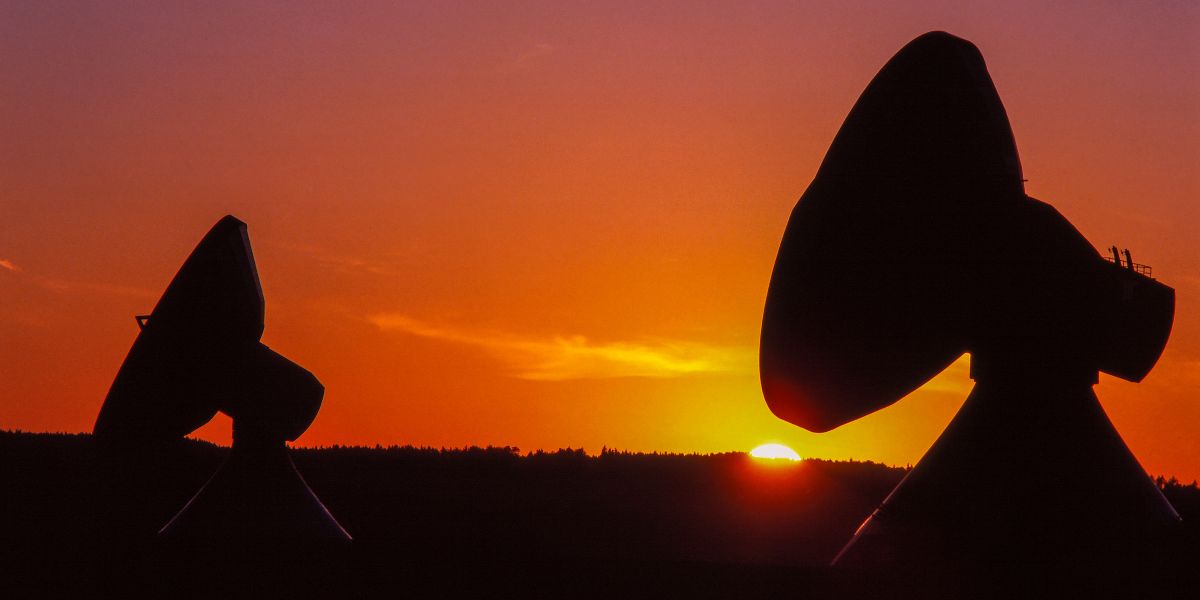AWS Public Sector Blog
Category: Satellite
How to migrate to the new AWS Ground Station Agent launching March 28
On March 28, Amazon Web Services (AWS) will release a new version of the AWS Ground Station Agent (agent), which is not compatible with past agent releases. In order to maintain operational continuity of Ground Station environments, agent users must follow the instructions provided in this blog post before upgrading to the March 28 version of the agent.
Creating AWS CloudFormation templates for AWS Ground Station DigIF workloads
Amazon Web Services (AWS) Ground Station has many different parameters and options to choose from when creating a contact and setting up data delivery. For this reason, it is advised that infrastructure as code (IaC) is used. This post is the first of a two-part tutorial that provides an overview of the resources required to create AWS CloudFormation templates for Digital Intermediate Frequency (DigIF) workloads, using AWS Ground Station to transmit data between the satellite and AWS Cloud environment.
SeloVerde uses geospatial big data and AI/ML to monitor deforestation in supply chains, powered by AWS
Open source geospatial artificial intelligence (AI) and machine learning (ML) analyses along with Internet of Things (IoT)-connected sensors can power near real-time data built on the cloud and assist in decision-making. Read this blog post to learn how Amazon Web Services (AWS) is supporting the Government of Pará, Brazil, in designing and deploying SeloVerde (Green Seal), a cutting-edge tool to address climate change challenges and traceability in deforestation-risk supply chains.
Building high-throughput satellite data downlink architectures with AWS Ground Station WideBand DigIF and Amphinicy Blink SDR
This blog summarizes some of the benefits of cloud-based ground segment architectures, and demonstrates how users can build a proof-of-concept using AWS Ground Station’s capability to transport and deliver Wideband Digital Intermediate Frequency (DigIF) data, along with the software-defined radio Blink, built by the AWS Partner Amphinicy.
22 new or updated open datasets on AWS: New polar satellite data, blockchain data, and more
The AWS Open Data Sponsorship Program makes high-value, cloud-optimized datasets publicly available on AWS. The full list of publicly available datasets are on the Registry of Open Data on AWS and are now also discoverable on AWS Data Exchange. This quarter, AWS released 22 new or updated datasets including Amazonia-1 imagery, Bitcoin and Ethereum data, and elevation data over the Arctic and Antarctica. Check out some highlights.
Building resilience: Using technology to prepare for, respond to, and recover from the unexpected
Every day, people around the world are impacted by the unexpected – from pandemics, to natural and human-wrought disasters, to economic crises. Technologies like the cloud can empower communities to prepare for and respond to the unexpected so that when a crisis hits, they can continue to advance. AWS works with customers and partners to build software solutions that improve government and nonprofits’ prediction, preparedness, response, and recovery capabilities—solutions that are being leveraged across Latin America and the Caribbean.
How Satellogic and AWS are harnessing the power of space and cloud
Satellogic is a leader in high-resolution Earth observation (EO) data collection. The company is creating a live catalog of Earth and delivering daily updates to create a complete picture of changes to our planet for decision makers. Watch a new video to understand how Satellogic uses AWS Ground Station and the AWS Cloud to democratize access to EO data that’s being used for high-impact missions.
Getting started with AWS Ground Station
Public sector organizations and commercial enterprises alike are reaping the benefits of AWS Ground Station, which lets customers command and control satellite communications, process satellite data, and scale their satellite operations. This article provides a general overview of AWS Ground Station, its key benefits, and general advice for getting started.
Managing the world’s natural resources with earth observation
With increasing pressure from climate change, loss of biodiversity, and demand for natural resources from already stressed ecosystems, it has become essential to understand and address environmental changes by making sustainable land use decisions with the latest and most accurate data. As part of the Amazon Sustainability Data Initiative (ASDI), AWS invited Joe Sexton, chief scientist and co-founder of terraPulse, to share how AWS technologies and open data are supporting terraPulse’s efforts to provide accurate and up-to-date information on the world’s changing ecosystems.
Virtualizing the satellite ground segment with AWS
As the number of spacecraft and spacecraft missions accelerates, moving aerospace and satellite operations to the cloud via digital transformation — including virtualizing the ground segment — is key for economic viability. In this blog post, we explain the benefits of virtualizing the ground segment in the cloud and present the core components of a reference architecture that uses AWS to support several stages of a comprehensive ground segment virtualization. Then, working from this model, we present additional reference architectures for virtualizing the ground segment that can accommodate various requirements and usage scenarios.









